This weekend was a great moment to drive to La Mancha grasslands to witness the spectacular display of the giants of the steppe. I joined Darío Gijón, Javi Aznar and their colleagues on an outing with colleagues from their Master’s Programme at University of Valencia for the day. The purpose of the visit was informally introducing the students to Iberian steppe birds and ecosystems. Although the forecast called for rain, we eventually had a pleasant, successful day driving around fields of lentil, barley and fallow.
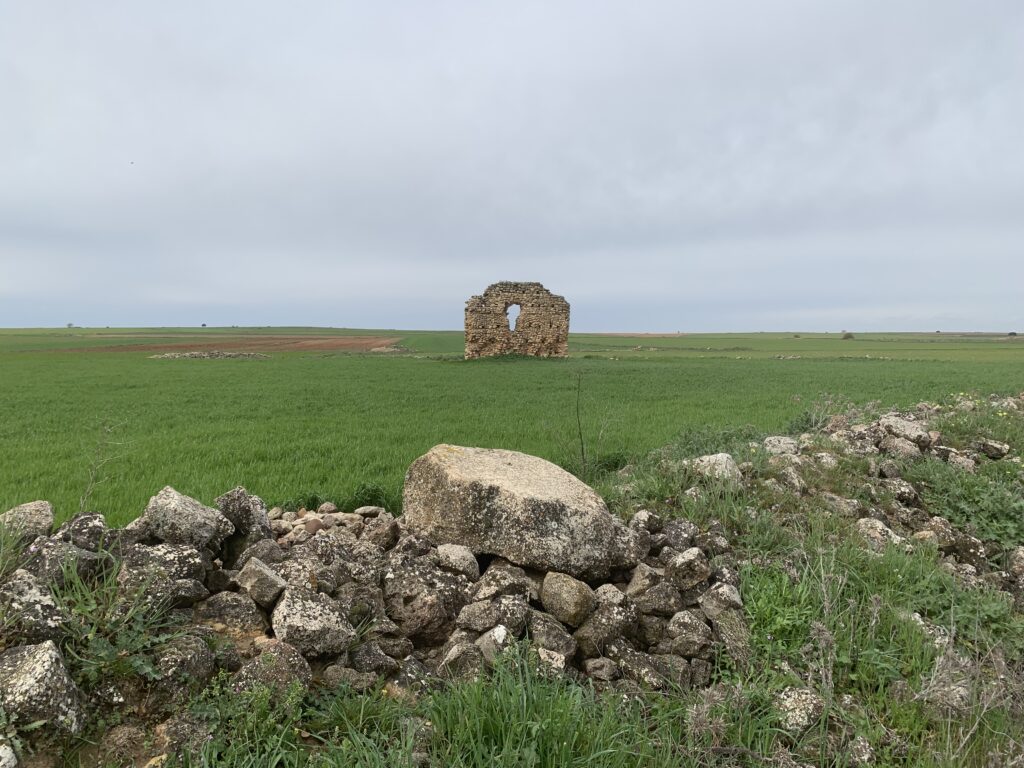
We all met in the town of Lezuza, where blue tits (Cyanistes caeruleus) foraged in the trees and a common nightingale (Luscinia megarhynchos) called closeby. Once all together, we all set off around 09:30 towards nearby fields at Nava de Peribáñez. We were soon greeted by a thick-knee (Burhinus oedicnemus) and a foraging greater short-toed lark (Calandrella brachydactyla).
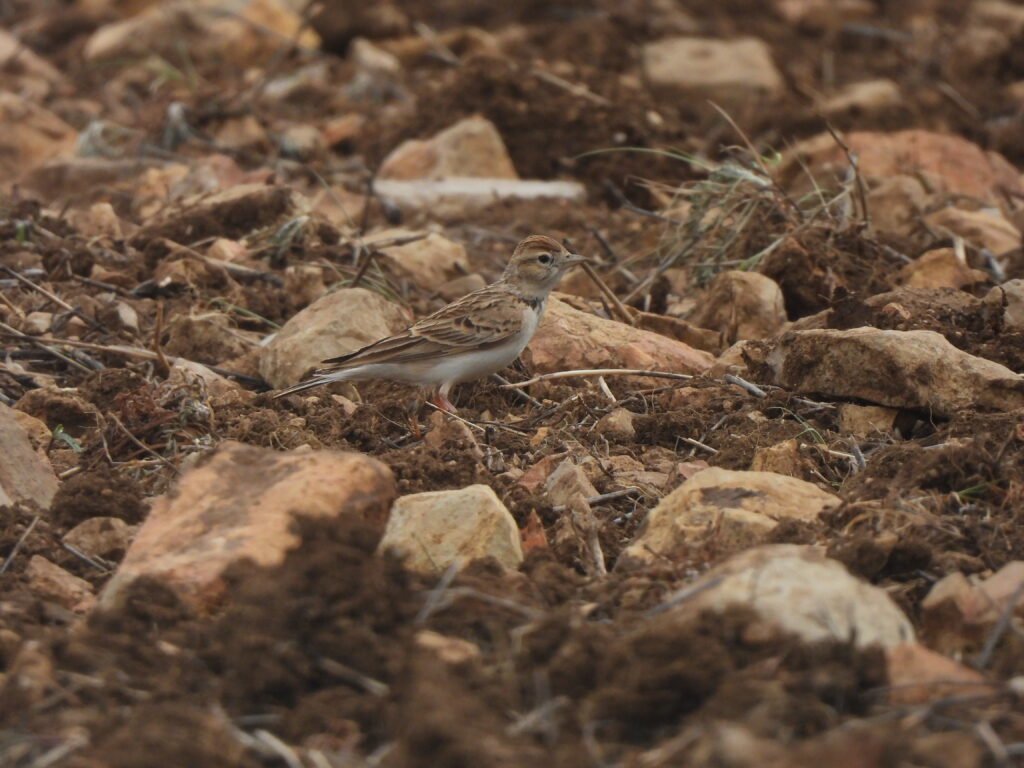
We stopped so everyone could glimpse the thick-knee, and then we noticed distant white dots in the green and reddish infinity of the fields. Amazingly, numerous great bustard (Otis tarda) males performed their flamboyant “foam-bath” display, showing off the bright white feathers otherwise covered under their plumage. Some of these massive white balls had females in the vicinity. An show out of a nature documentary, watched through the telescope.
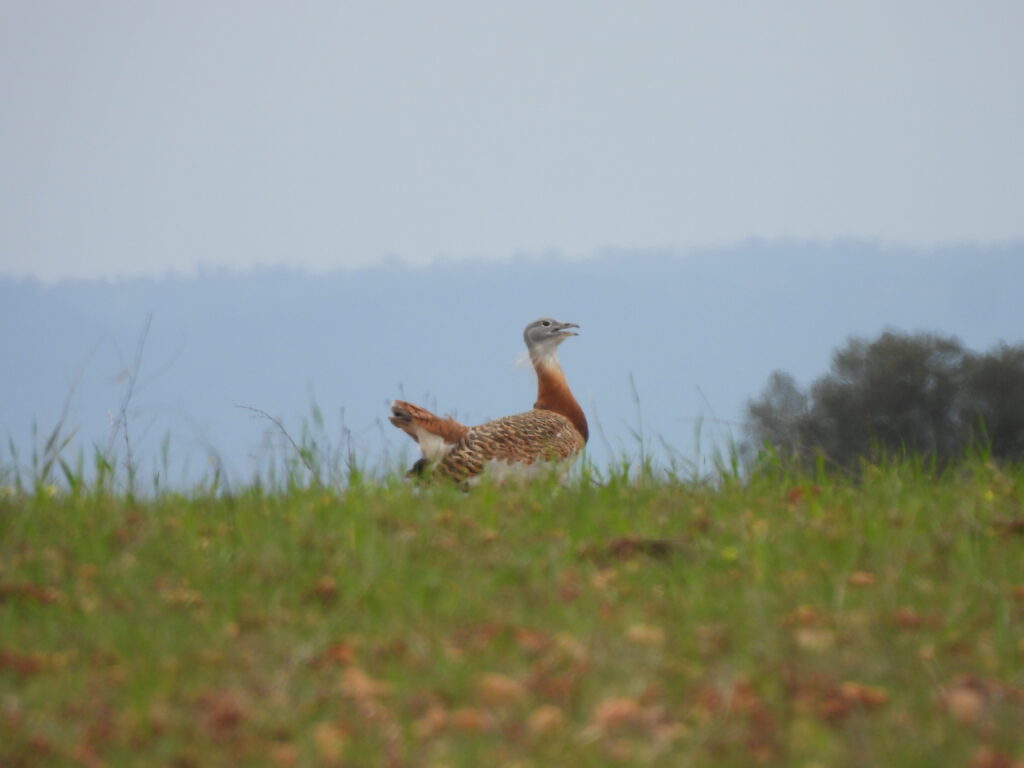
In a closer field, a smaller white dot instead revealed a male little bustard (Tetrax tetrax). The bird also engaged in territorial behavior by calling, which is best heard at close range and without the constant wind we had over the day. Over the horizon, some more great bustards and few northern lapwings (Vanellus vanellus) seemed to navigate through the wind turbines.
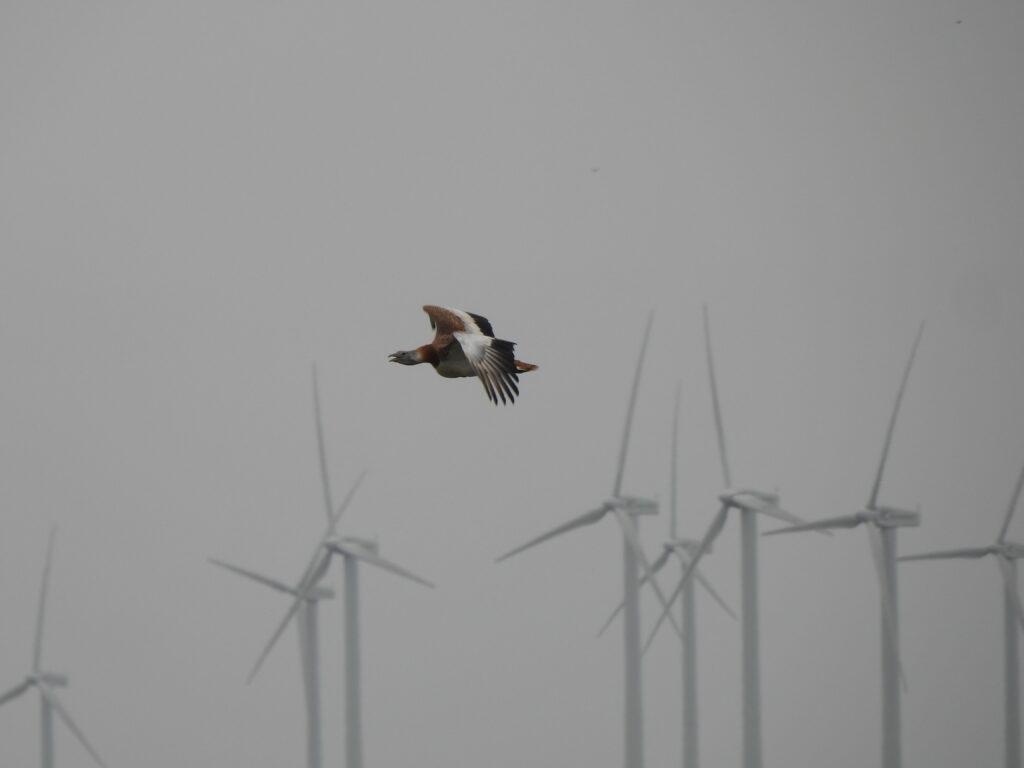
Cutting through overhead, several flocks of smart pin-tailed sandgrouse (Pterocles alchata) painted the gloomy sky. On another stop, we found 36 of these colorful birds foraging at close distance and freezing as soon as they noticed us.
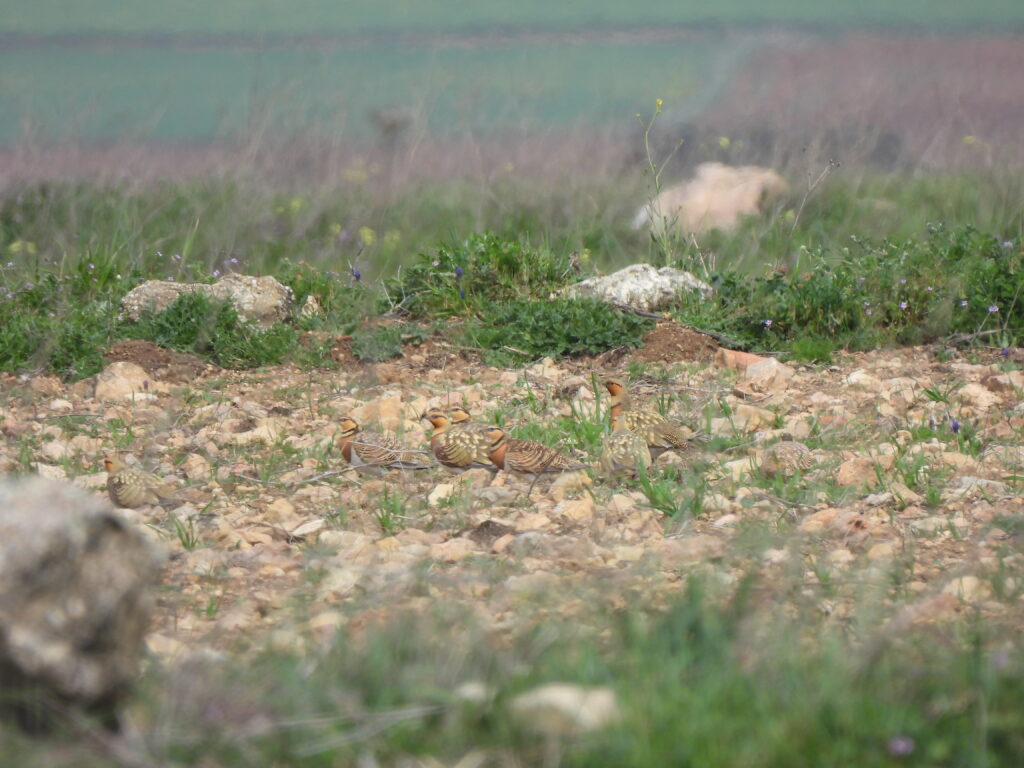
Corn buntings (Emberiza calandra) and calandra larks (Melanocorypha calandra) were very vocal and omnipresent, with good numbers populating virtually all the places visited. Thekla’s larks (Galerida theklae) and woodchat shrikes (Lanius senator) were also seen in good numbers. Some numbers of carrion crows (Corvus corone) and rock sparrows (Petronia petronia) were also scattered — a flock of the latest mixed with some Spanish sparrows (Passer hispaniolensis). The melodies of all these species were combines to others we didn’t manage to glimpse, namely few common quails (Coturnix coturnix) calling in some grass fields.
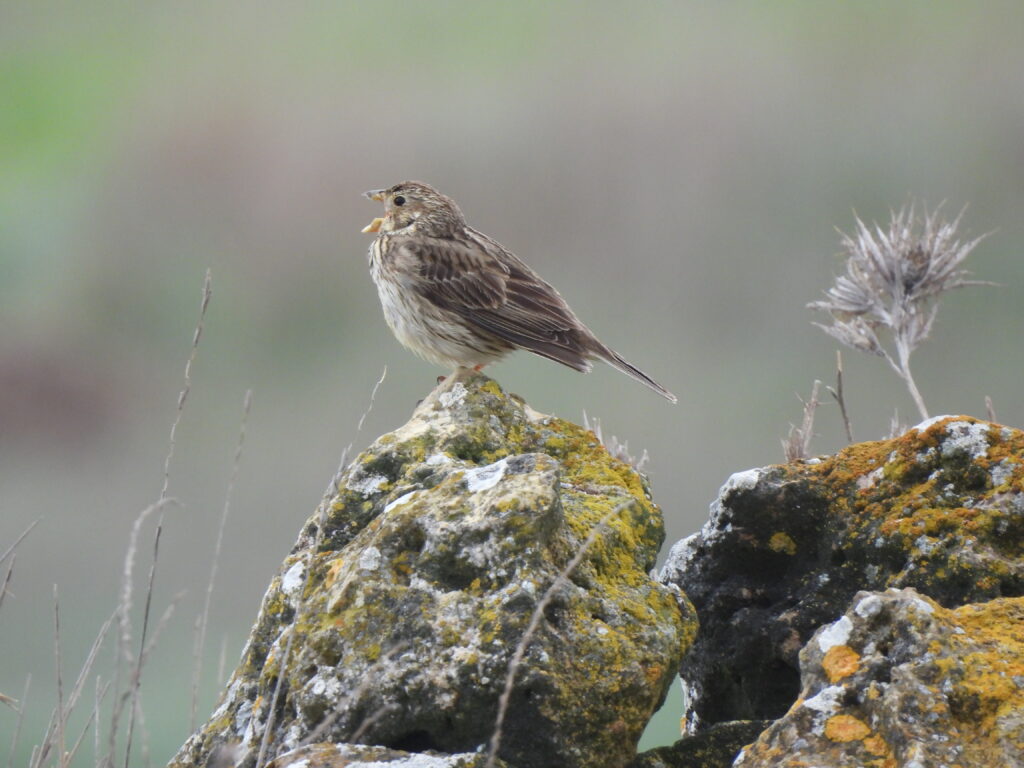
We then drove through fields and scrub between El Ballestero and El Bonillo. Several great spotted cuckoos (Clamator glandarius) soon became evident, their calls alerting of their presence. These often skulky birds obliged, with birds posing on top of shrubs and hopping on the ground ehile foraging. We had great views of an individual catching numerous caterpillars at close range, not too bothered by our presence.
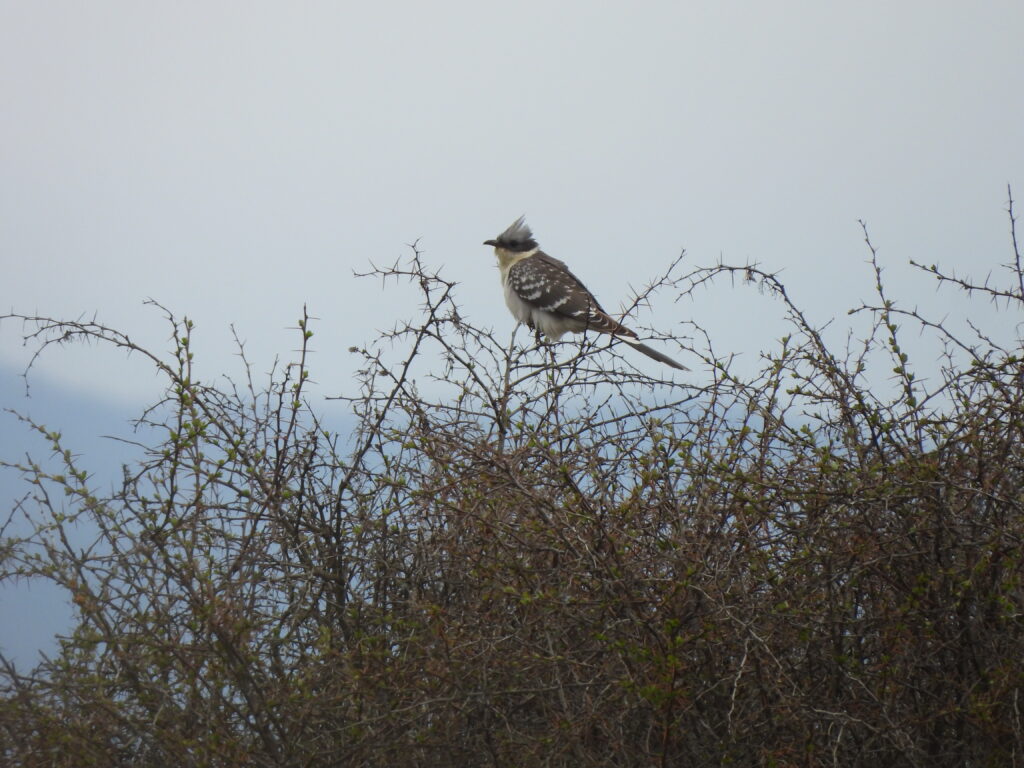
While we snacked on that same spot, somebody found the silhouette of a raptor sitting on a holm oak (Quercus rotundifolia) log some kilometers away scoping through the distant fields. The distance did not help but a showy white shoulder patch revealed an adult Spanish eagle (Aquila adalberti) sitting close to a large nest on a tree.
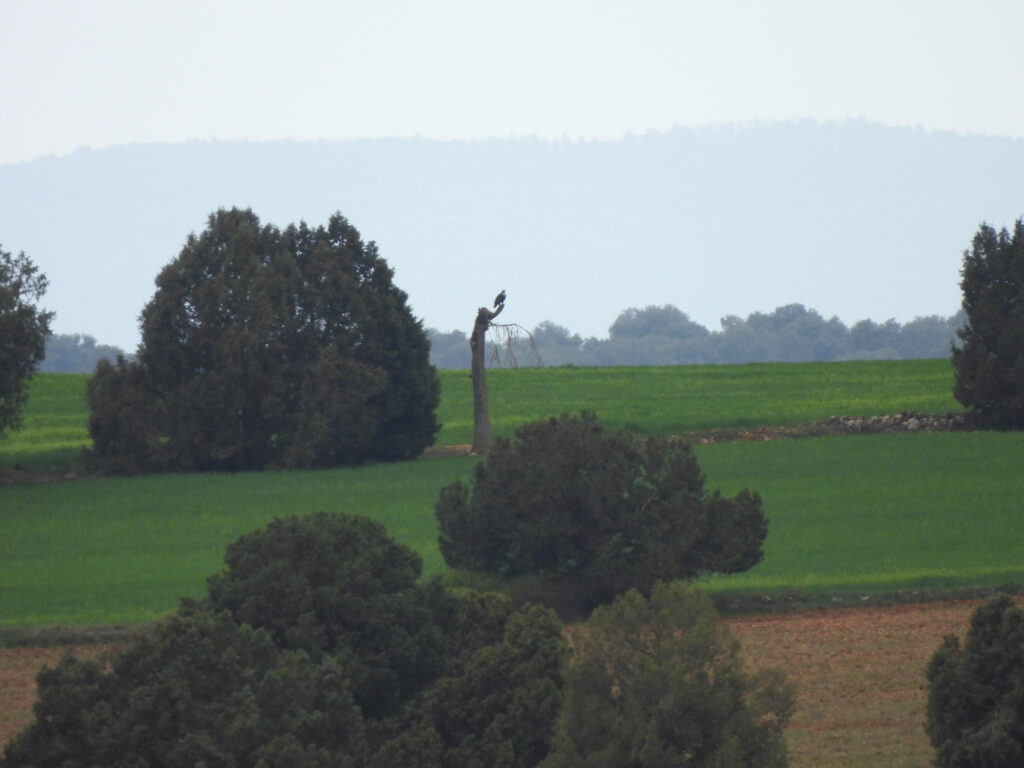
This stunner was actually the second imperial eagle of the day, after an extremely distant, likely subadult bird in flight that left a bittersweet impression merely an hour before. Encountering these mythical, Iberian-endemic raptors was fantastic, considering how compromised their population has been — with as low as 30 breeding pairs globally back in the 1960s.
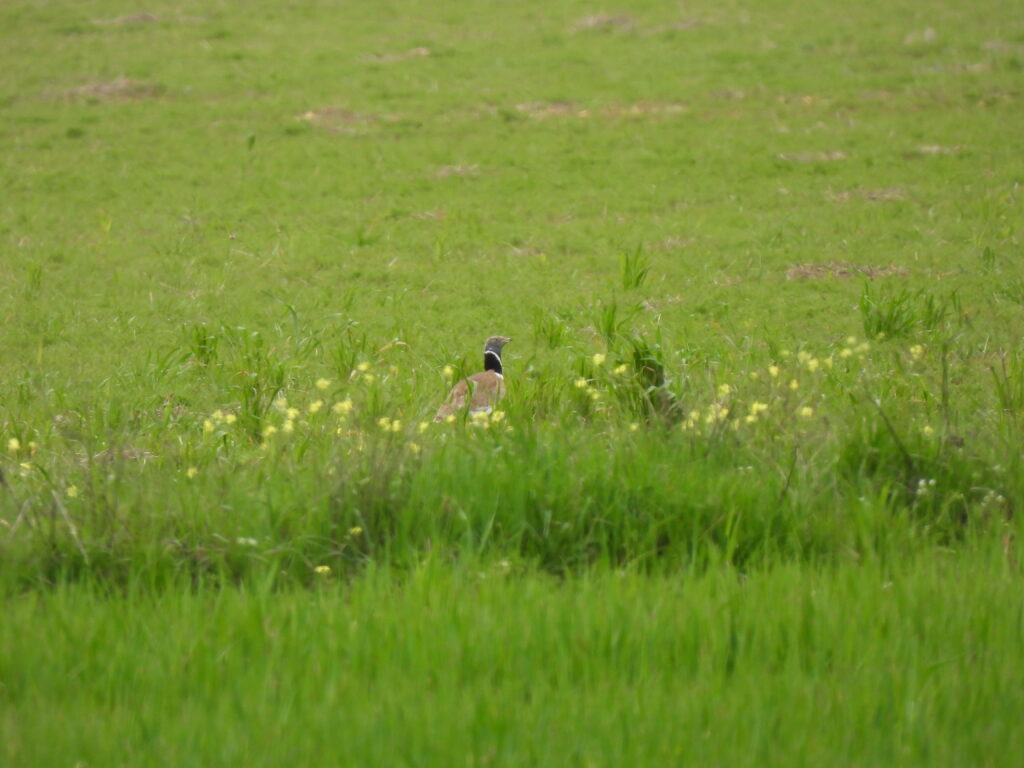
We visited fee wetland points yielding different species. First, we caught up with a puddle next to a bird observatory where no aquatic birds were seen, but up to five northern wheatears (Oenanthe oenanthe) and a meadow pipit (Anthus pratensis) bathed during a pit stop of their migration travels.
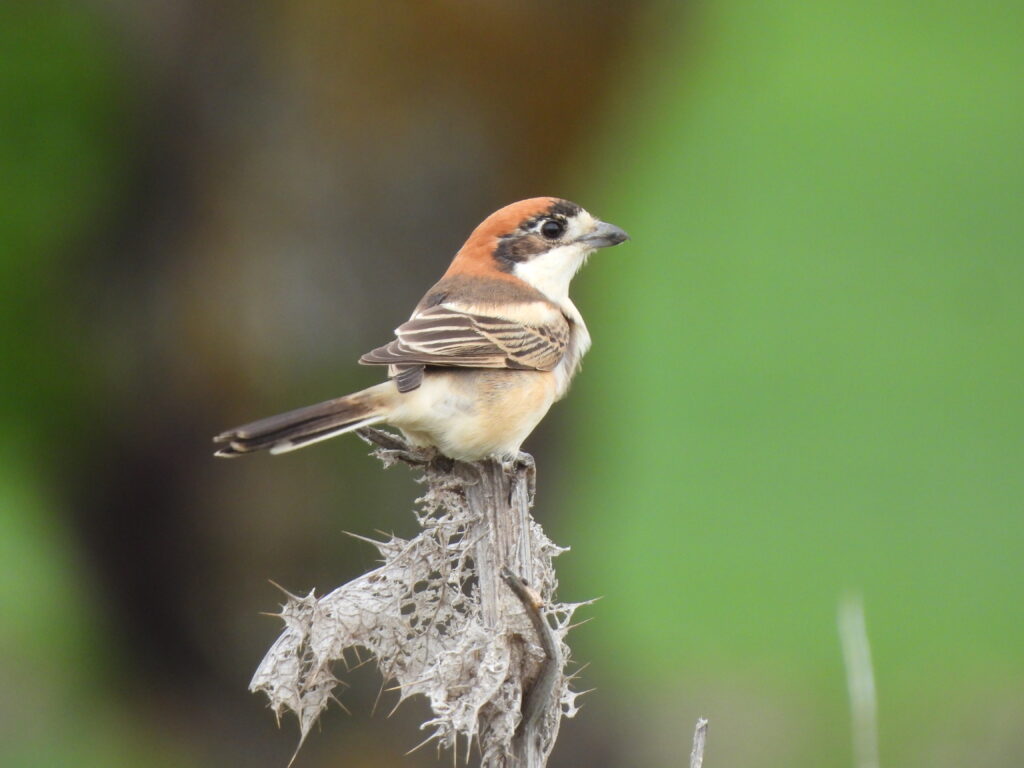
Later, Laguna de la Pinilla provided some numbers of shelducks (Tadorna tadorna), mallards (Anas platyrhynchos), coots (Fulica atra), gray heron (Ardea cinerea) and green sandpiper (Tringa ochropus) — all funny sights given the location, surrounded by fields with some great bustards scattered. A flock of European bee-eaters (Merops apiaster) showed off on the trees around the lagoon, as so did a great spotted woodpecker (Dendrocopos major) nearby. Hoopoes (Upupa epops) and zitting cisticolas (Cisticola juncidis) were also additions in this spot. A poplar grove featured numerous spherical nests — as Javi said, likely belonging to a Spanish sparrow colony that was nowhere to be seen.
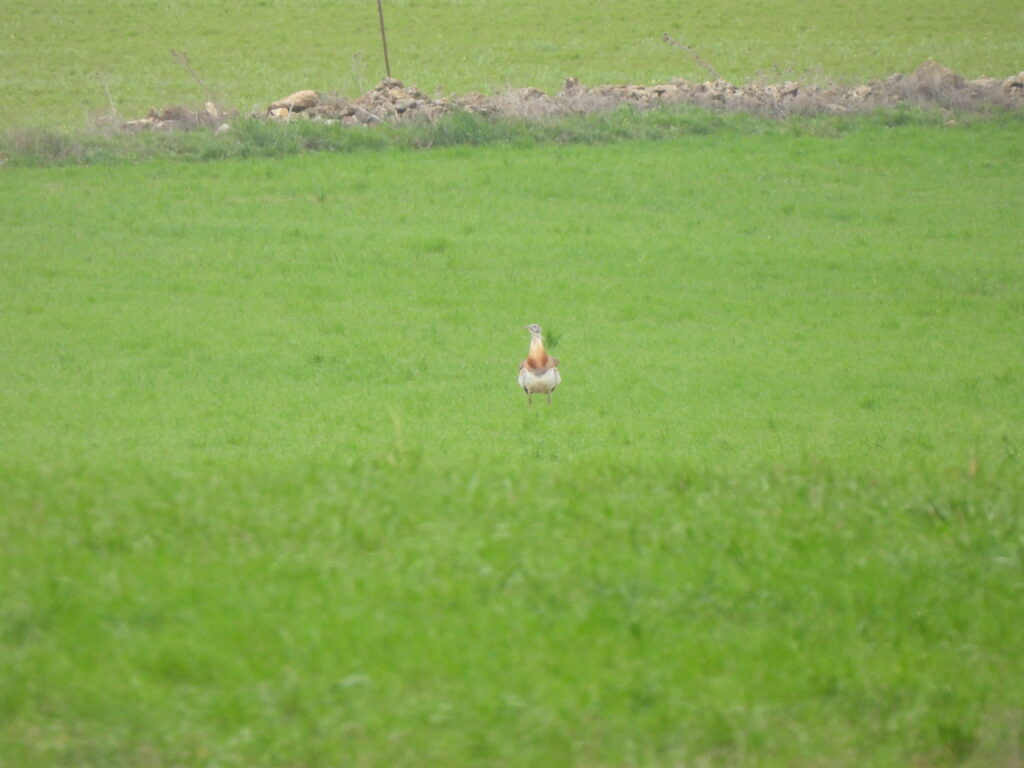
The afternoon went on and we walked on a thyme scrub where the very last Dupont’s larks (Chersophilus duponti) of Albacete were sighted, now seven years ago. I recently experienced what it takes to connect with this bird — setting off at midnight and reaching the field well before dawn gives the best chances. Javi mentioned that the territorial frenzy larks experience in April in Spain sometimes allows for calls and sights even at daylight in suitable spots. However, with a depauperate (perhaps extinct) population remaining in the area, no wonder why we were not successful.
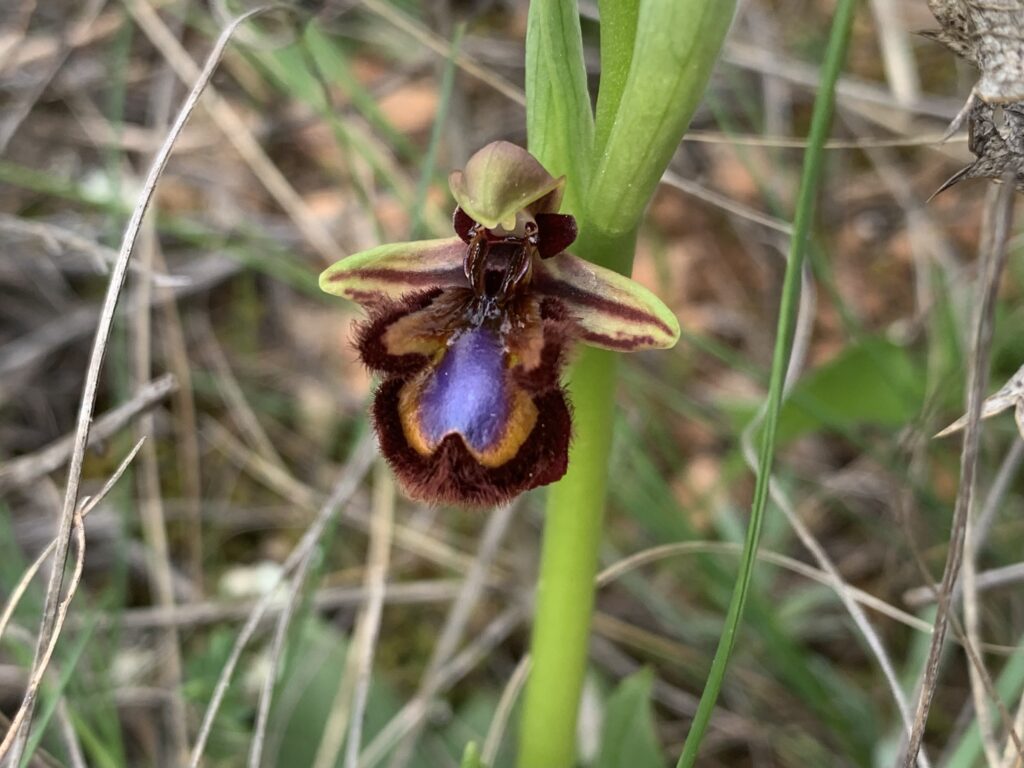
Instead, we bumped into numerous flowers of star-of-Bethlehem (Ornithogalum baeticum), mirror orchid (Ophrys speculum) and different range-restricted toadflax species (Linaria oblongifolia subsp. aragonensis, Linaria amethystea) on our walk. The scrub was plentiful of flowering camephytes painting the floor as far as the eye reached.
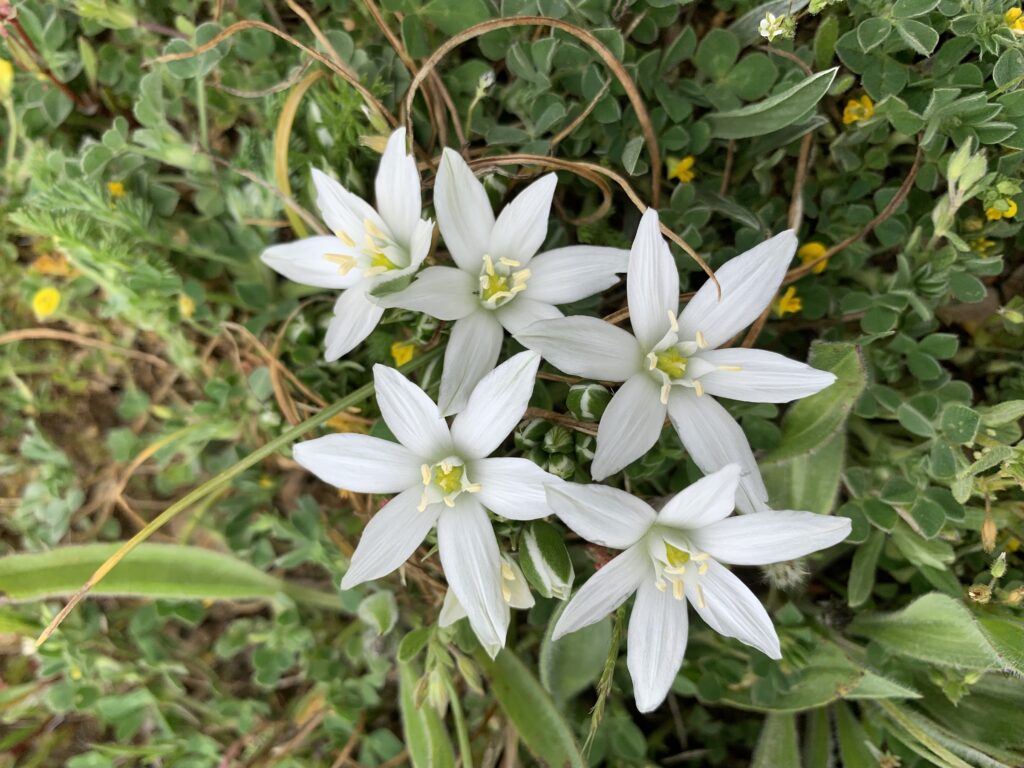
Later, driving around yielded several flocks of cooperative lesser kestrels (Falco naumanni). Unlike its common relative across Europe, this steppe-dweller is migratory in our latitude, favours tile roofs and forages in flocks. And despite being favored by certain human construction, current land use change is unfortunately sinking their populations as is the case for most of the Iberian steppe birds.
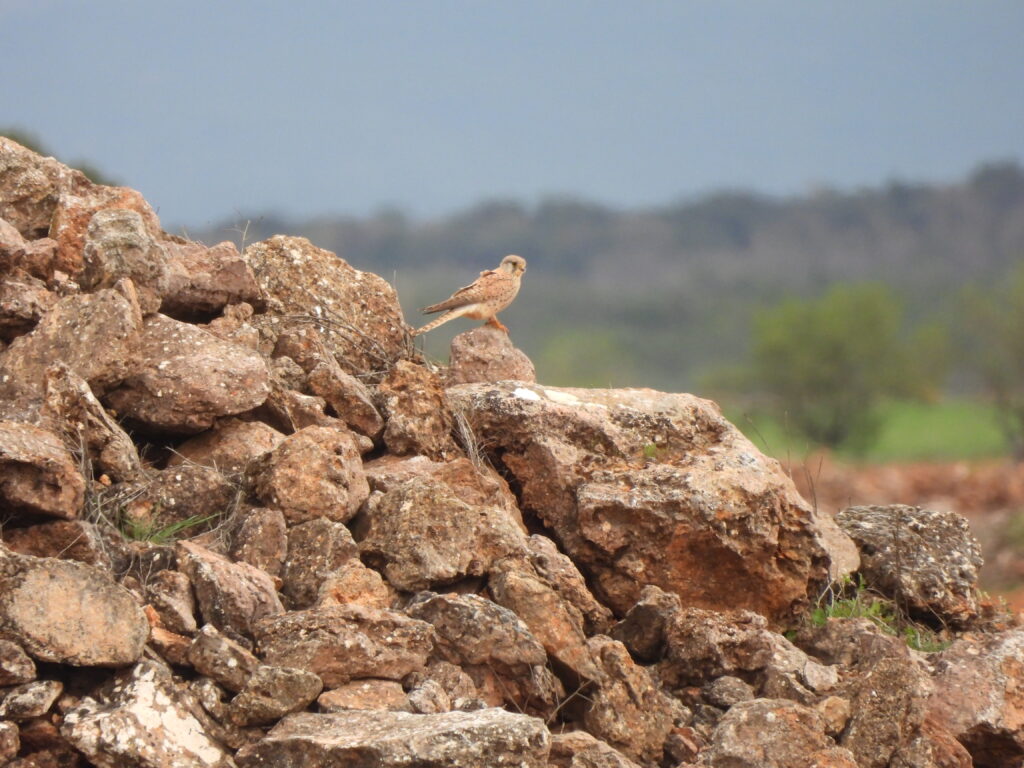
The sunlight turned golden later in the afternoon by the time we started to wrap up. On our last drive, our first whinchat (Saxicola rubetra) of the season made a brilliant performance. A cooperative male gave us great looks while flying close to and around our cars — the six of them.
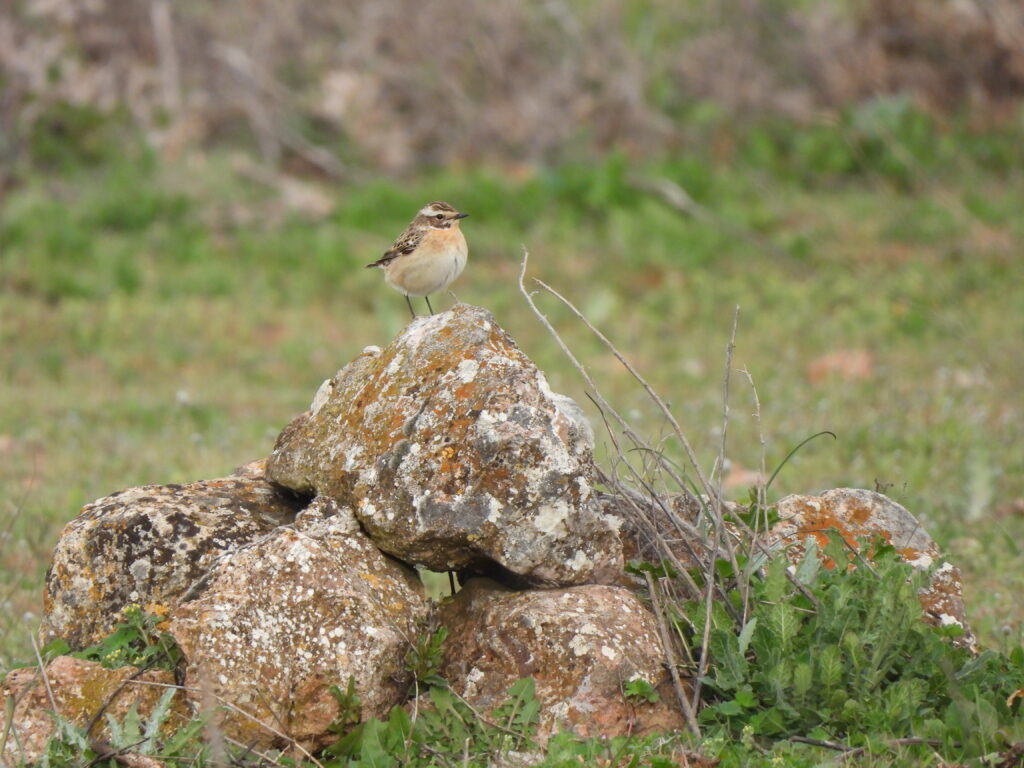
While we drove away, still flocks of several great bustards took flight from the fields. With centuries of land and resource exploitation, I can’t help it but think of the mere existence of these creatures today as a miracle. Only focusing on conservation efforts will allow generations to come to witness and enjoy the dancers of the steppe.

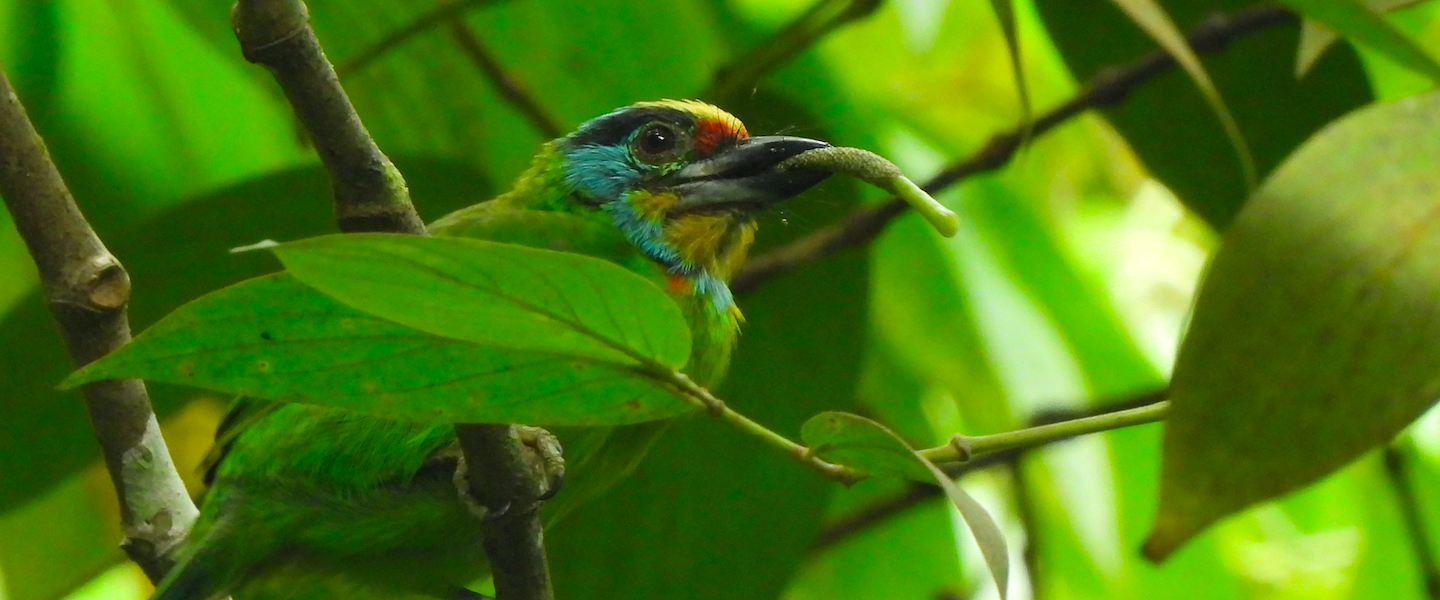



Comments are closed